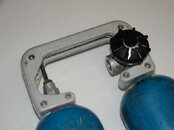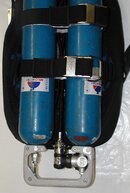- Messages
- 5,884
- Reaction score
- 3,000
- Location
- Lake Worth, Florida, United States
- # of dives
- I'm a Fish!
I want to start doing my recreational dives in an ultra-slick configuration, with a "no buoyancy wetsuit", with no wing, and no extra hoses or other sources of drag. Clearly I will want a J valve or equivalent, if possible also.
Anyone have any tank suggestions that are better for this than an Al 80 ? Something that would have the lowest buoyancy shift of any tank over 70 cu ft....
If I could find a few old 72's, I would consider them if I can determine that the fatigue level on them has not compromised the safety of using them over the next few years.....if an old steel 72 was never abused, my understanding is that it should be safe for use for many decades to come....But this understanding comes from Internet opinions, and may have no relation to actual facts...another reason for this post
[video=youtube_share;AmT-KwGtri0]http://youtu.be/AmT-KwGtri0[/video]
I plan to use the ultra-slick gear and tank with either one of these Dol-Fins, or with big DiveR freedive fins...either will allow movement in the water that takes you to a category far beyond what typical scuba divers are capable of, given the high drag gear concepts most popular today.
Anyone have any tank suggestions that are better for this than an Al 80 ? Something that would have the lowest buoyancy shift of any tank over 70 cu ft....
If I could find a few old 72's, I would consider them if I can determine that the fatigue level on them has not compromised the safety of using them over the next few years.....if an old steel 72 was never abused, my understanding is that it should be safe for use for many decades to come....But this understanding comes from Internet opinions, and may have no relation to actual facts...another reason for this post
[video=youtube_share;AmT-KwGtri0]http://youtu.be/AmT-KwGtri0[/video]
I plan to use the ultra-slick gear and tank with either one of these Dol-Fins, or with big DiveR freedive fins...either will allow movement in the water that takes you to a category far beyond what typical scuba divers are capable of, given the high drag gear concepts most popular today.





